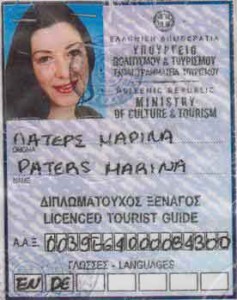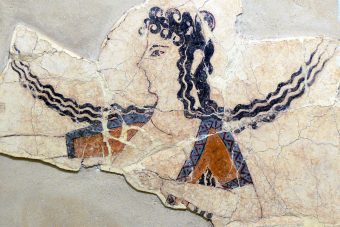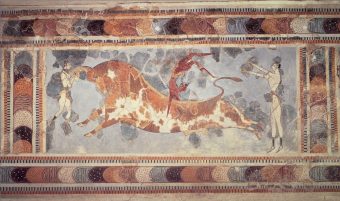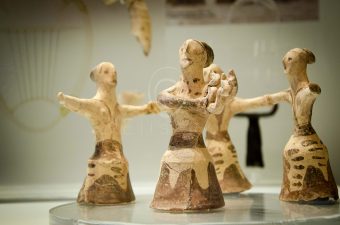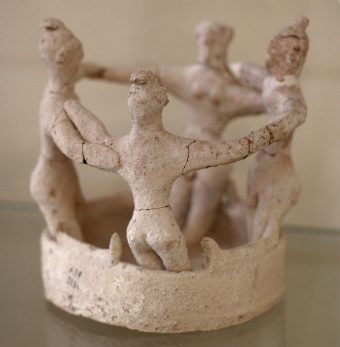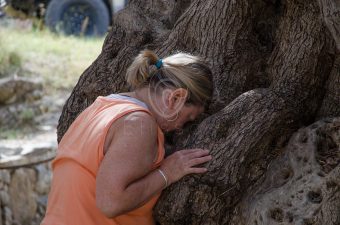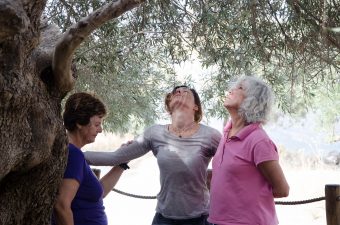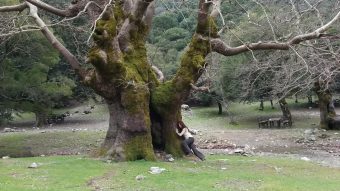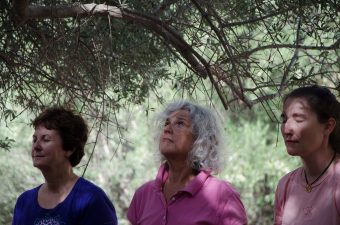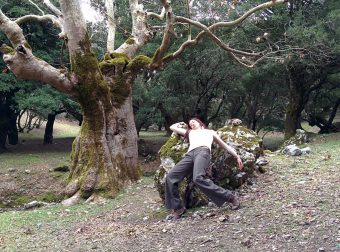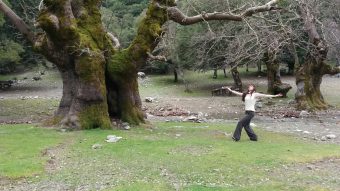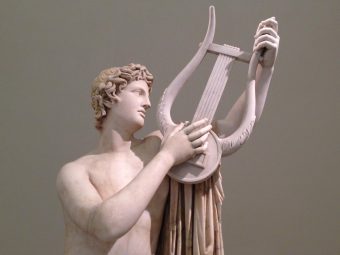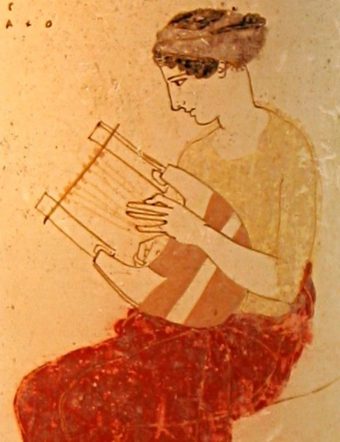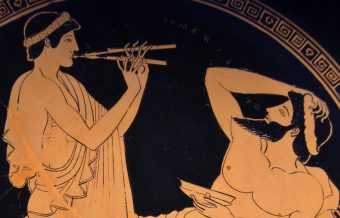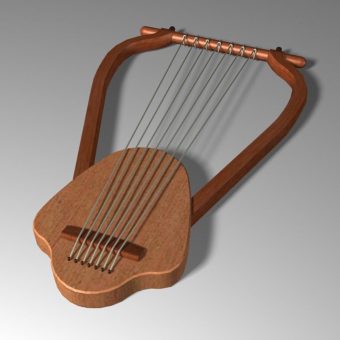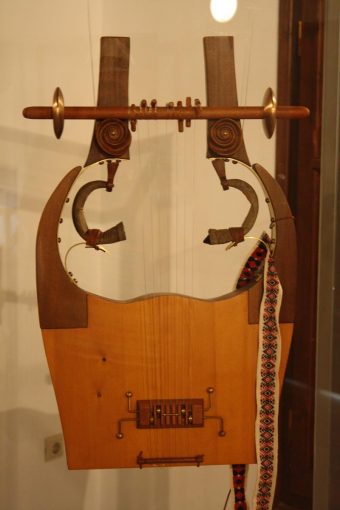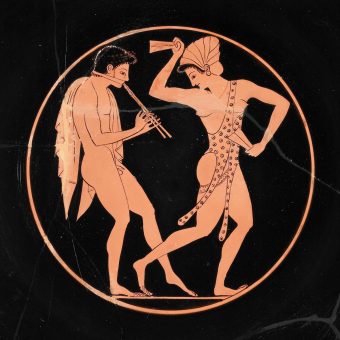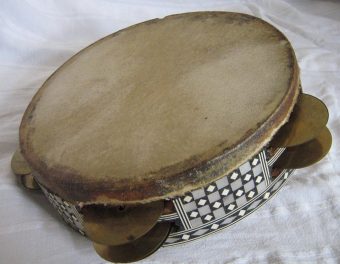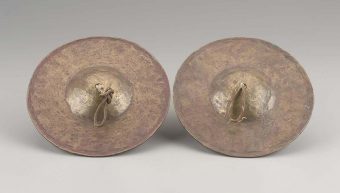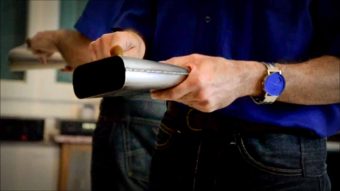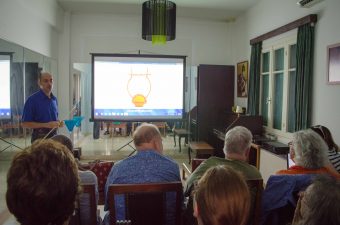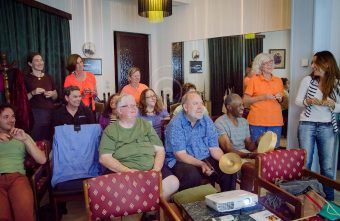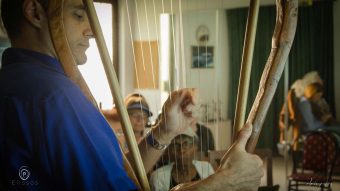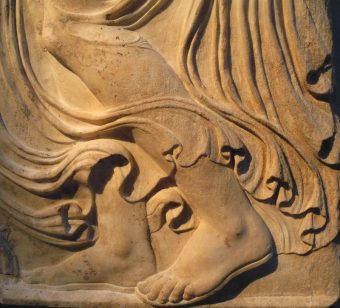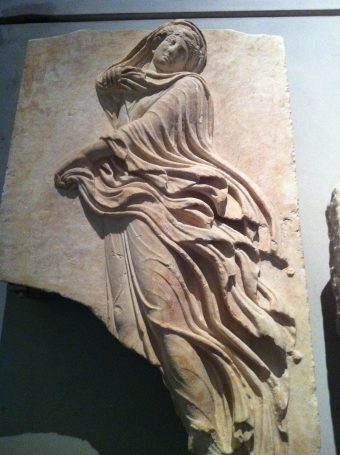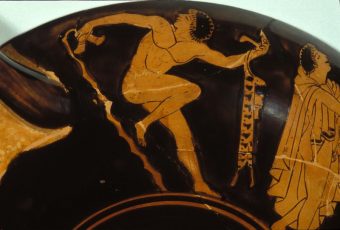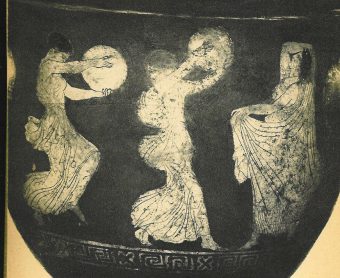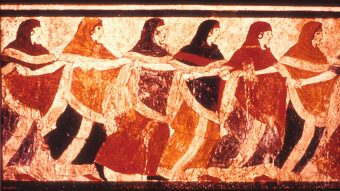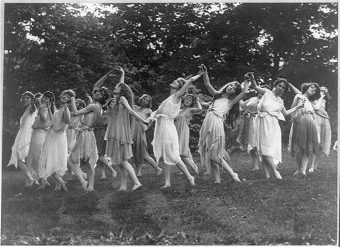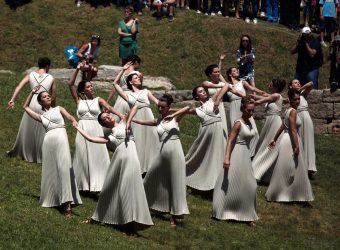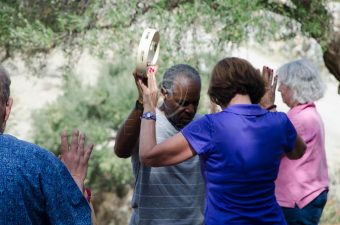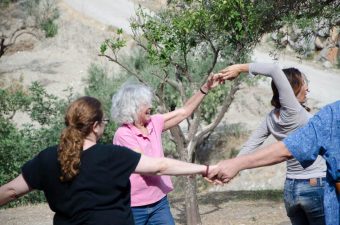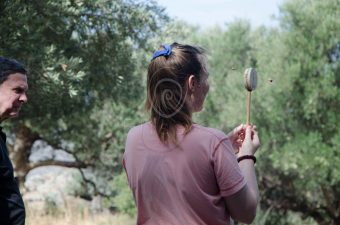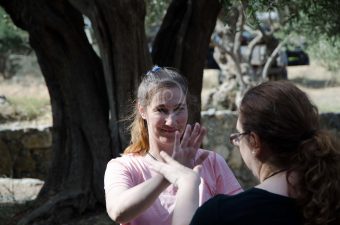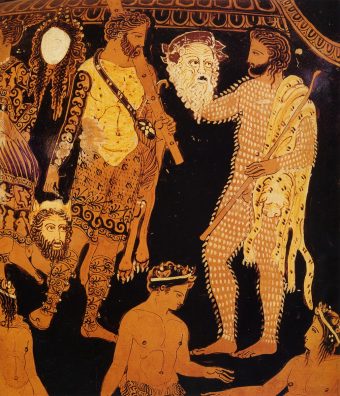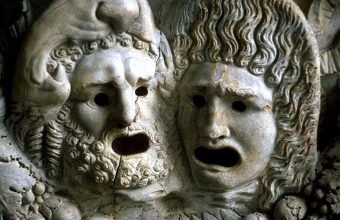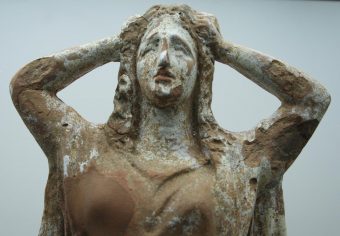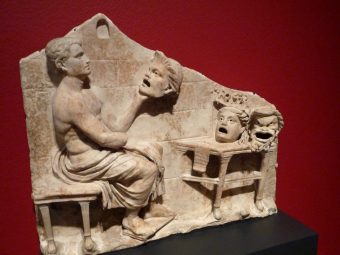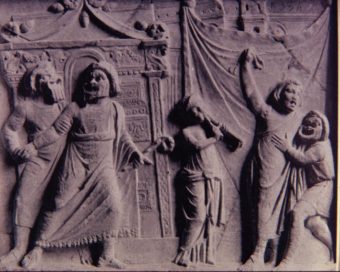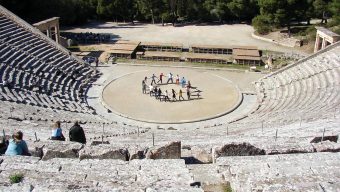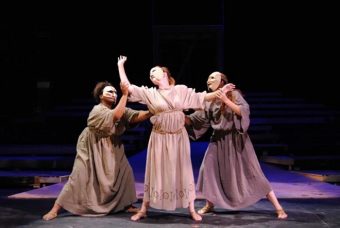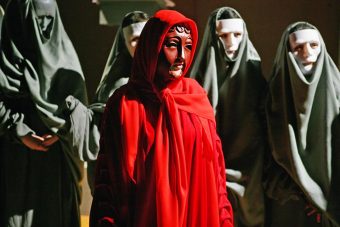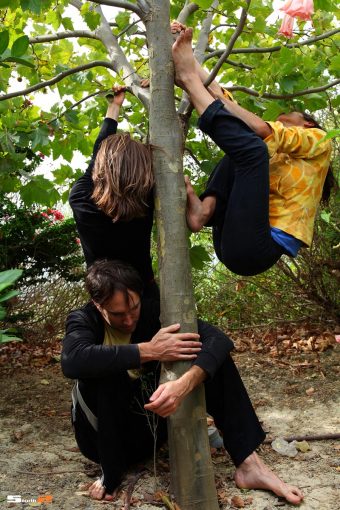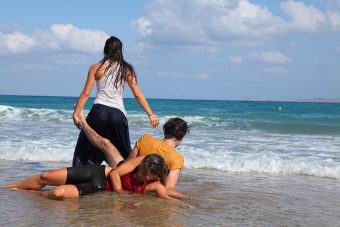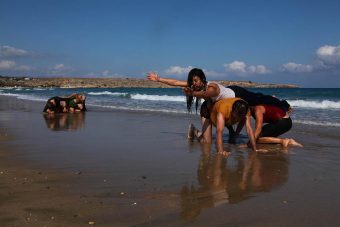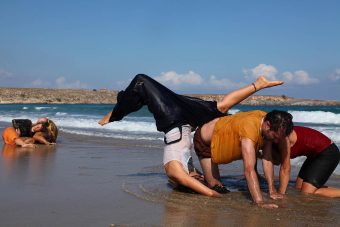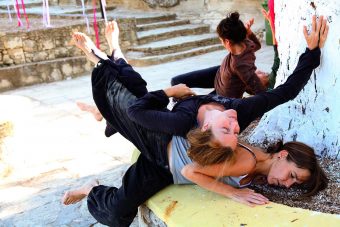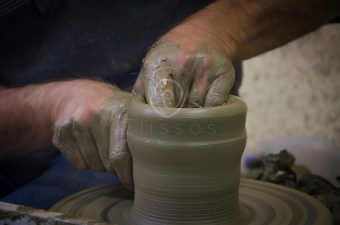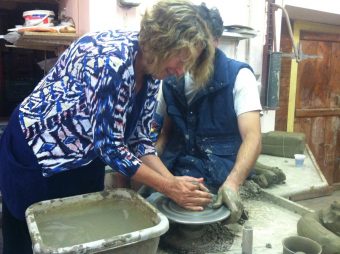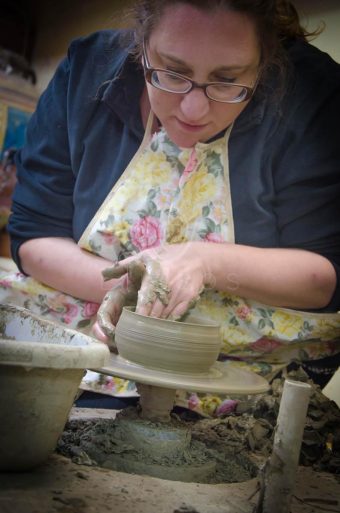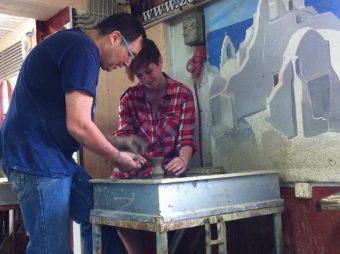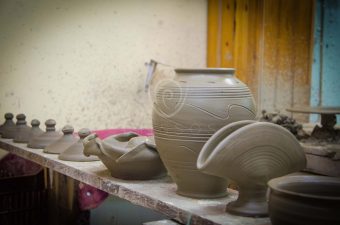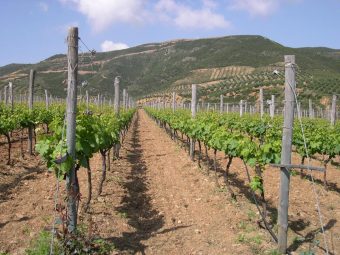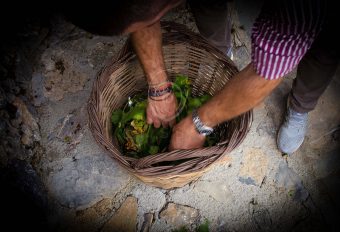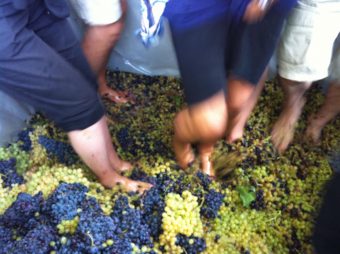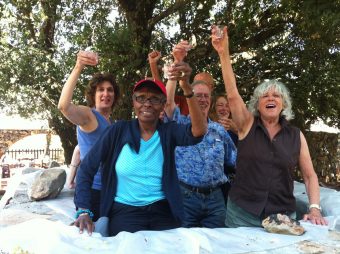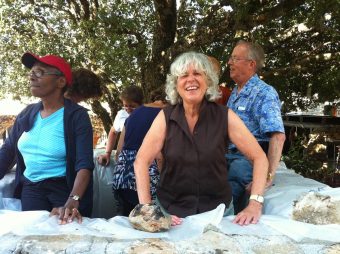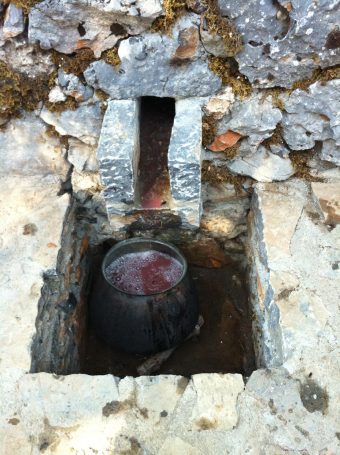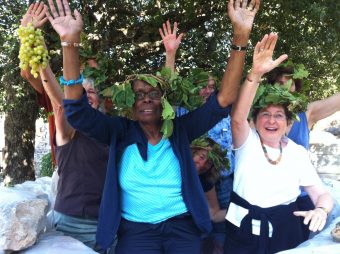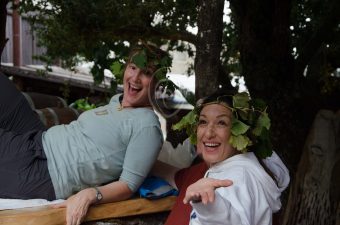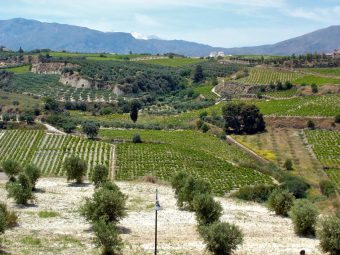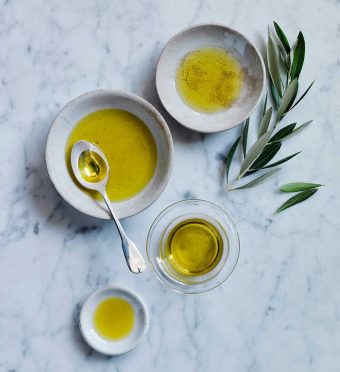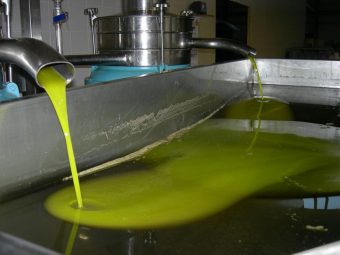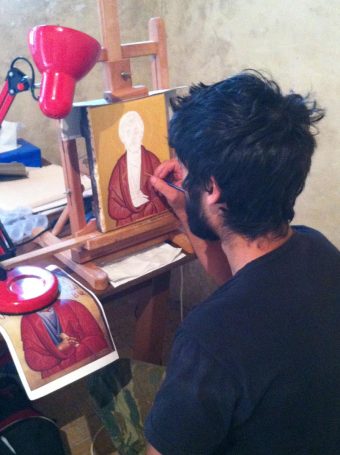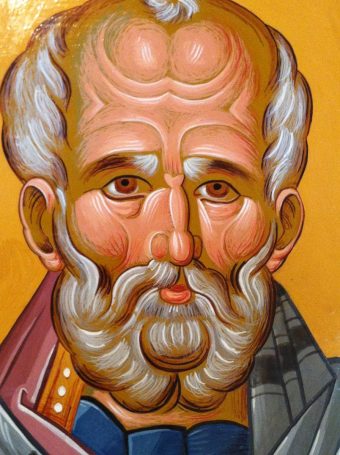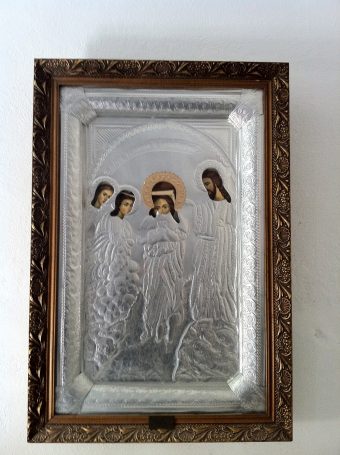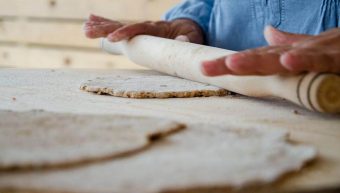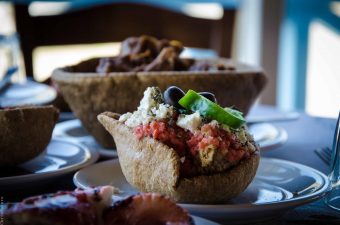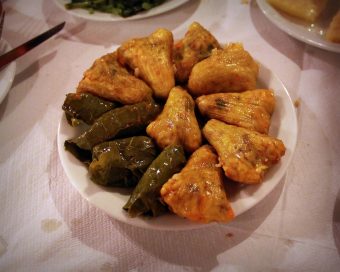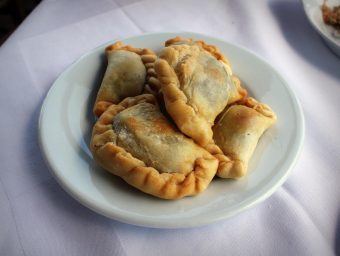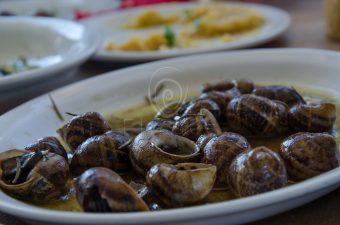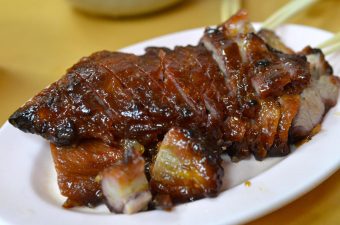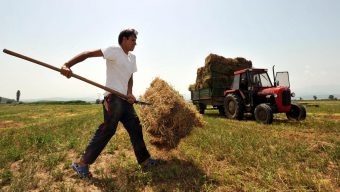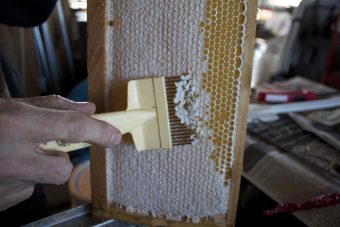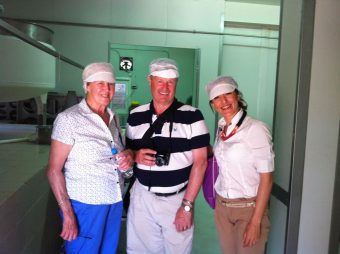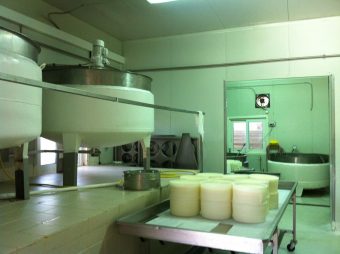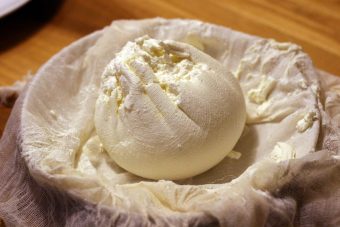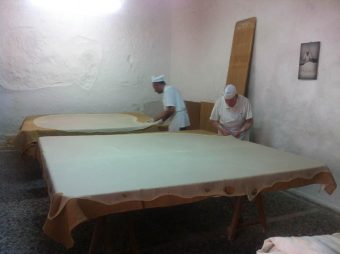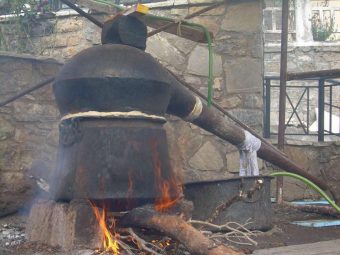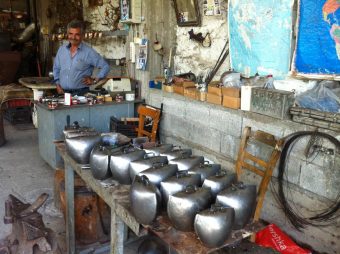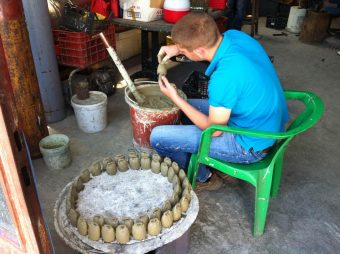Minoan Ritual Dance Approach
Dance became an Art in Minoan Crete. The Cretans are considered to have been the first to develop the Art of Dance and transmitted it to others .The war dance of the “Kourites” of Crete mentioned by Strabo, is said to have been the oldest dance of the world, while Homer mentions the dancing floor of “Ariadni of the lovely tresses” and the “Labyrinthical Dance” of Crete. On Crete the ancient writers put the origins of the ancient Greek “Pyrrhic” war dance, while Crete is also the birthplace of the Circular Dance performance.
Our Dance lab material derives from various Minoan Art depictions, such as seal stones and rings, glyptic figures and figurines, pottery designs and fresco representations, depicting Minoan ritual dances. With background the ancient literature from Homer to Athenaus, and our knowledge on the Minoan musical instruments and ritual practices, you will experiece an approach on the Minoan ritual Nature Dance in theory and practice.
Ancient Greek Music and Dance
ANCIENT GREEK MUSIC, AN AESTHETIC APPROACH
The connecting and therapeutic results of sound, movement, expression, rhythm and voice are very well known since ancient times. The very first aim and goal of the ancient Greek theater, music, and dance were to cure and to activate inner forces. The importance of the music for the ancient Greeks was tremendous, while the sound, the number of strings of the musical instruments, and the music frequency was believed to activate the body balance and expansion and to bring the “catharsis” in body and spirit.
Our lab on the ancient Greek Music consists of two parts, a theoretical and a practical part. The theoretical part introduces ancient Greek music to you through a lecture. The theory is focusing on the ancient Greek musical instruments, musical forms, ancient Greek modes and moods, the harmony of the spheres, and the ancient Greek musical notation. The second part is an experiential one, during which you will experience a coordinated interactive attempt on playing yourselves accurate copies of ancient Greek percussion musical instruments.
ANCIENT GREEK DANCE, AN AESTHETIC APPROACH
Our lab on the ancient Greek ritual Dance consists of a theoretical and a practical part too. The theoretic part consists of a presentation of the history of Dance from prehistoric times down to the late Roman period. During the experiential part, you will practice several ritual dance postures accompanied by music, based on ancient Greek Art depictions and references of ritual dances in ancient Greek literature.
Ancient Greek Theater
ANCIENT GREEK DRAMA
Twenty five hundred years ago western theatre was born in Athens, Greece. The theatre of ancient Greece evolved from religious rites which date back to at least 1200bc. In northern Greece, in Thrace, a cult arose that worshipped Dionyssos, the God of fertility and procreation. This cult of Dionyssos practiced ritual celebrations followed by ecstatic women called maenads carrying long phallic symbols known as “thyrsoi”… In the 6th century bc a priest of Dionyssos called Thespis, introduces a new element in the ritual worshipping of the God. He engages in a dialogue with the chorus. He becomes, in effect, the first actor.
Our lab in the field of the ancient Greek Theatre will give you a general but also deep idea of the ancient Greek drama. It consists of theory, which includes a lecture on the ancient Greek theatre/drama, its origins and development. It also consists of practice, which includes acting, dance, movement and “Logos” (speech) lessons working on an ancient drama text.
CHORUS
In this lab you will explore the organic movement of the Chorus in the ancient Tragedy. Using texts from classical and modern tragedies, this workshop explores the challenges and beauty and power of chorus work. This workshop provides a modern approach to choral movement and a physical way to engage with choral text. You will investigate how to create dynamic choral movement and voice so as to create a tragic space. You will also discover the role of the chorus leader and the position of the individual hero/heroine in relation to the chorus.
Contact Improvisation in Nature
Contact Improvisation is a partner dance form based on the physical principles of touch, momentum, shared weight, and most quintessentially – following a shared point of contact. The form was founded in 1972 by Steve Paxton. Integrating his background as a modern dancer and his studies in the martial art form Aikido, Steve developed Contact Improvisation through explorations with his students and colleagues at the time.
Starting with simple stretching and breathing exercises in nature, you will continue with practices that will help you open up your senses, feel your surrounding, and connect with the land and with the group. You will investigate the contact that is being created over a contact point with your partner, and eventually partners. You will investigate features such as body surfaces, the sensitivity of your skin, trust, mental and physical relaxation, curiosity, playfulness, support, experimentation, discovery, your state of awareness and openness, and momentum. Researching biomechanical fundamentals such as gravity, space, weight, and flow, you will create your own improvisation dance.
Folk Arts and Agriculture Experiential
POTTERY
Visit a traditional Cretan pottery workshop and experience how local artists create pottery today, following ancient methods and techniques that are still alive on this island for thousands of years. Try to create your own piece of art under their guidance!
WINE HARVEST AND PRESSING OF THE GRAPES
Participate in the harvest process of the grapes in one of our grapevine fields and experience the wine pressing as that was conducted in the past. Stomp the grapes by foot in a traditional stone wine press. Travel in time and experience the wine harvest as a wine festival!
OLIVE OIL FACTORY
Visit a traditional olive oil factory, find out all about the process and different stages of production of the extra virgin olive oil of Crete. Talk with the locals and see exactly how they do it, from the harvest of the olive trees down to the bottling of the oil.
BYZANTINE PAINTING
Visit the workshop of a painter of Byzantine portable icons. See with your eyes and feel with your hands the stages of that very difficult, detailed and demanding technique. Find out all about the Art of making portable icons.
COOKING LESSONS
Participate in a cooking lesson and find out all about the Mediterranean and Cretan traditional cuisine and their healthy and often healing effects. Prepare and cook your own Cretan dish based on local products!
CRETAN EVENTS OF AGRICULTURE
Participate in the Cretan Events of Agriculture varying from season to season. Visit beehives in nature and find out all about the honey processing and production of Crete. Participate in local cheese making, and experience the “Raki” distillation process. Live Crete like an insider!


